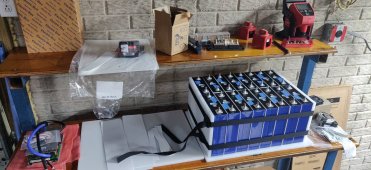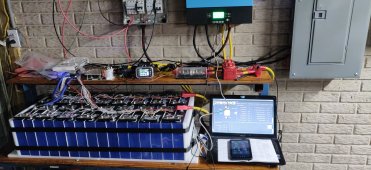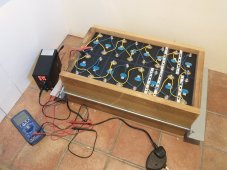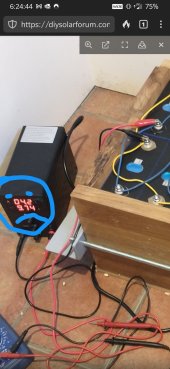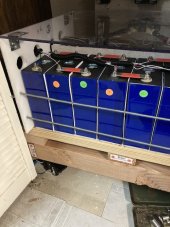I'm planning on making 4 16s batteries from 280AH cells. My simple plan is to build a snug fitting box for 8 cells.(cut to size Ikea cutting boards between them). I'm ging to just brad nail and glue the boxes together. I'm going to round off the external corners of the box, then put 3-4 sets of pallet strapping around each box. There won't be a lot of tension, but it should withstand a lot of tension from expansion.
My further plan is to charge each battery one at a time, then discharge. Then I will disassemble and match the batteries between sets based on capacity.
My further plan is to charge each battery one at a time, then discharge. Then I will disassemble and match the batteries between sets based on capacity.




